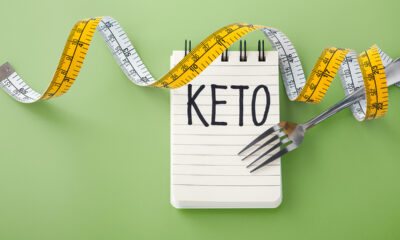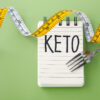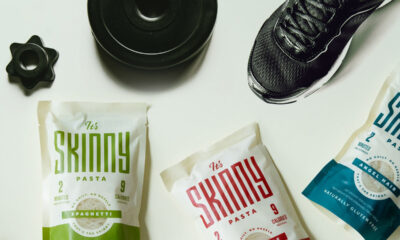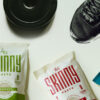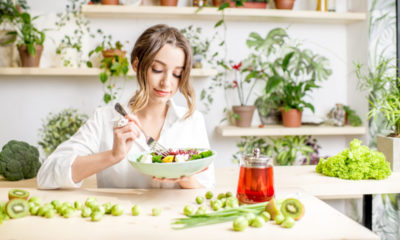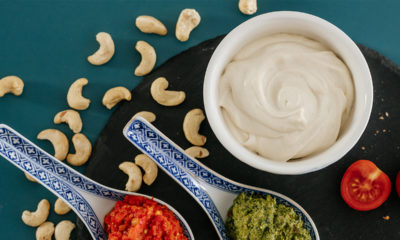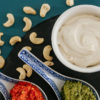Nutrition
Eat Well Feel Better
Looking at what you eat and how it delivers improved performance can be more important than trying a new training routine.
Imagine living with two competing goals. Now imagine being an 18-year old collegiate athlete with academic goals and sports goals that typically do not align, yet each demand 100% of your focus and abilities. While you don’t have to be a collegiate athlete to experience these life stresses, the lifestyle choices of a world champion student athlete who is accomplishing her dreams of excelling at both is a great story from which to learn how to support yourself in mind and body.
A Re-education
Shae Foudy, World Champion Stand Up Paddle Boarder and 2018 Female Paddle Boarder of the Year, is in her third year at Saddleback Community College located in Mission Viejo, California. She went to community college straight out of high school and hopes to become a Registered Dietitian after graduation. Shae lives at home and is completely responsible for her personal nutrition. Without taking some college nutrition classes, Shae says she wouldn’t have learned very much about nutrition. She learned about the importance of hydration for the body and performance and the necessity of a well-rounded balanced diet in her classes.
She also experienced that necessity first-hand. “At 14 years old I was competing for Team USA in Nicaragua for a paddle board competition. At this point in my career I was still a novice in hydration and eating properly before big races and training days. In the middle of the 14-mile race…I felt myself bonking and becoming super dizzy. …I ended up passing out on the sand shortly after finishing. The medics told me I had low blood sugar and was dehydrated. This was the moment that I realized that if I was going to race like a professional I needed to start taking care of my body and eating like a professional.”
Seeking Solutions
Using her nutrition knowledge, Shae has designed specific diet goals for herself that keep her on track with her protein (especially since she avoids meat), carbohydrate and hydration. “I drink water throughout the day, include as many vegetables and whole grains in my meals as I can, and stay away from sugar as much as I can.” Facing many similar obstacles as others who try to live an active life, work for a living, and depend on restaurants, fast food, or prepared foods to fuel themselves, Shae realized this and took action. “The school cafeteria offers little to no nutritious foods that I could eat or would want to eat. I am allergic to dairy and gluten and I also do not eat meat so there are practically no options for me. I pack lunch and snack every time I go to school because of this.” Shae says that planning is the key. “I would suggest to any student athlete going into college to be proactive when it comes to your nutrition. I always plan ahead what I am going to eat for the week and pack my own food for school. Eating out becomes expensive and may not be the healthiest option. If your school has a good cafeteria with a wide range of options or you live at home I would go for getting healthy nutritious foods for my meals as much as I can. Also don’t be afraid to hydrate during classes- even if it means you have to get up once or twice to use the restroom.” You can take this advice to the bank whether you are a student or not!
Just like many of us Shae is selective with her between-meal snacks. To maximize her training efforts and races she depends on Vitargo to be fully fueled and comfortable:
“I absolutely love Vitargo and have been fueling with this product for over five years. I use Vitargo leading up, during and after all big races that I have! It is easy to drink, easy for my body to digest and truly makes an impact on how I feel during my race. I never bonk and I recover faster. It is what I like to call my ‘secret weapon’.” When it comes to the difference that it makes for Shae to meet her priorities, she says, “Overall I am just in a better mood when I eat well because I feel good. I can focus more in school because my energy levels are that much higher.” Since time and money are often obstacles to eating well, here are a couple of recipes designed with time, money and kitchen facilities in mind. They are so simple and easy you could make them in a dorm room!
Power Soup
Turning leftovers and excess ingredients into soup is one of the best ways to conserve your budget and prevent waste. Soup is easy to make and even better to eat. This recipe will give you a generic idea of how to turn your ingredients into a soup.
What You Need
- 1/2 cup of water (halfway up the mug)
- Small spoon of salt free seasoning
- Small handful of chopped & cooked chicken or other protein (frozen or refrigerated)
- 2 heaping spoons of frozen vegetables
- 2 heaping spoons of canned tomatoes
- Pinch of salt
What To Do
- Mix water and seasoning in mug or microwave safe container
- Add protein, vegetables, tomatoes and stir
- Microwave on high for 2 minutes
- Stir and let cool slightly before eating
- Add salt if necessary to taste
Protein hummus
Typically made with garbanzo beans, lots of garlic, lemon juice, tahini, olive oil and spices our version kicks up the protein with Greek yogurt and knocks out the cost with some items you may already have
What You Need
- 1/2 cup of garbanzo beans
- 2 spoons of plain Greek yogurt
- 2 ounces of orange juice
- 1 spoon of pesto
- 3 sundried tomatoes
What to do
- Place garbanzo beans, Greek yogurt, pesto, tomatoes, and orange juice in blender
- Blend until smooth. This takes a little shaking of the blender to accomplish a smooth hummus.
- Spoon onto a plate or eat straight out of the container.
- Serve with celery, carrots and crackers for a fancy treat.



